Perforated Metal Styles

- Stainless Steel Staggered Sheet in Coil
- Diamond Hole Perforated Metal Panels
- Embossed Sheet Metal
- Slotted Hole Perforated Sheet
- Perforated Noise Barrier Panels
- Punched Slotted Tubes
- Perforated Acoustic Screen Panels
- Perforated Metal Sunshade Screen
- Perforated Metal Disc Filters
- Perforated Ceiling Panels
- Perforated Diffusers
- Perforated Ducting
- Perforated Louvers
- Checker Plate
- Round Hole Perforated Sheet
- Square Hole Perforated Sheet
- Semi-Circular Hole Metal Sheet
- Triangle Opening Metal Sheet
- Decorative Opening Metal Sheet
Perforated Materials:
- Perforated Sheet in Aluminum Powder Coated Black
- Perforated Metal Plates for Tubes
- Perforated Stainless Steel
- SUS 304 Punched Plate
- Aluminum Perforated Sheet
- Perforated Copper Sheet
- Mild Steel Perforated Metal
Perforated Metal Products
- Perforated Stainless Steel Sheets for Steam Strainers
- Perforated Stainless Steel Sleeves
- Dimple Perforated Sheet Steel Grating
- Stainless Steel Perforated Strainer Basket
- Perforated Stainless Steel Air Curtain Screen
- Perforated Screen Sheet in Stainless Steel
- Perforated Windproof Nets
- Perforated Vent Grille
- Polisher Screen
- Perforated Metal Grader Screen
- Perforated Stainless Steel Milling Screen
- Perforated Angle Bead
- Perforated Plate Sieves
- Slotted Filter Sheet
- Perforated Metal Coils
- Perforated Sheets
- Perforated Panels
- Perforated Metal Screen
- Perforated Steel Tube
- Perforated Filters
- Perforated Grilles
- Speaker Grille
- Perforated SS Tube
- Aluminum Perforated Strips
- Balustrade Panels
- Perforated Panel Railings
- Fire Escape Staircase
- Perforated Rack Panels
- Perforated Architecture Mesh
- Perforated Metal Security Screen
- Perforated Cable Tray
- Perforated Channel Cable Tray
- Checkered Tread Plate
- Embossed Tread Plate
- Aluminum Tread Plate
- Non-slip Stair Tread
- Slotted Liner
- Bridge Slotted Screen Pipe
- Dimple Perforated Plate
- Perforated Floor Plate
- Slotted SS316 Perforated Sheet
- Slotted Aluminum Perforated Sheet
- Ni Hard Perforated Floor Plate
- Diamond Perforated Grip Grating
- Hexagonal Perforated Mesh
Technical Terms:
- Perforated Metal Opening Patterns
- Applications of Perforated Sheet
- Materials Applied for Perforated Metal
- Benefits of Perforated Metal
- Calculation of Sheet Metal Weight
- Open Area Calculation
- Perforated Metal Definition
- Perforated Metal Features
- Terminology of Perforated Metal
Other Sheet Metals
Processing Machines
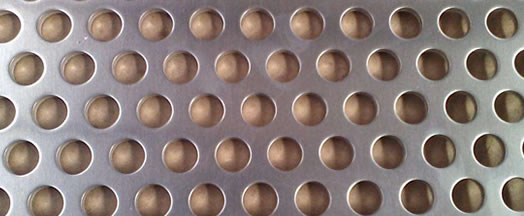
Aluminum Checkered Tread Plates - Anti Slip Industrial Floors and Vehicle Steps
Aluminum tread plates are anti-slip aluminum checkered sheets with diamond, lentil or teardrop patterns.
Uses: Light weight aluminum tread plates are used for industrial walkways, stairs, vehicle flooring, and warehouse platforms.
Aluminum Tread Plates Gauges:
The term "gauge" refers to the thickness of metal plates.
0.063" (typically corresponds to 14 gauge for aluminum)
0.080" (typically 12 gauge)
0.100" (typically 10 gauge)
0.125" (typically 8 gauge)
Anti Slip Types for Aluminum Tread Plates:
Checkered Diamond Aluminum Plates(One, Two, Three, Five Bars);
Tear Drop Raised Aluminum Plates;
Round Bean Embossed.
Choosing Checkered Plate Patterns for Treads and Floors:
- 2 Bar Aluminum Diamond Checkered Plate:This pattern features two parallel raised bars or lines running across the plate's surface. It offers some anti-slip properties but is less aggressive than the 3 Bar and 5 Bar patterns. Often used in decorative applications and on interior surfaces.
- 3 Bar Aluminum Checkered Plate:This pattern has three raised bars or lines that intersect at 60-degree angles, forming a series of equilateral triangles. It provides better anti-slip properties compared to the 2 Bar pattern. Commonly used in applications where slip resistance is essential, such as stairs, ramps, and industrial flooring.
- 5 Bar Aluminum Checker Plate:The 5 Bar pattern consists of five parallel raised bars or lines running across the plate's surface, forming a grid of small diamonds.
It offers the highest level of slip resistance among these patterns, making it suitable for heavy-duty applications.
Often used in truck beds, trailer floors, and other outdoor or industrial settings where slip resistance and durability are critical.
The choice of pattern depends on the specific requirements of application. If a high level of slip resistance and durability is needed, 5 Bar checkered plate is a popular choice. 3 Bar pattern provides a good balance between slip resistance and aesthetics, while the 2 Bar pattern is more decorative in nature and offers some slip resistance.
Choosing Aluminum Alloy Grades for Tread Plates6061-T6 Aluminum tread plate conforms to ASTM B632/B632M and is an aluminum alloy tread plate with good strength, weldability, and resistance to stress corrosion.
6061-T6:
Alloy: 6061 is an aluminum alloy predominantly made up of aluminum, magnesium, and silicon. It's known for its excellent mechanical properties and weldability.
Temper: The "T6" temper designation indicates that the material has been solution heat-treated and artificially aged. This temper results in high strength and good resistance to stress corrosion.
Standard: ASTM B632/B632M pertains to aluminum-alloy rolled tread plate. When you reference this standard in the context of 6061-T6, it means the tread plate is made of 6061 alloy in the T6 temper and meets the requirements set by the ASTM B632/B632M standard.
AW-5754-T114 Aluminum Tread Plate is in line with European standards such as EN 1386, offering good corrosion resistance, especially to industrial and marine environments, along with good weldability.
Alloy: 5754 is an aluminum alloy predominantly containing aluminum and magnesium. It's known for its excellent corrosion resistance, especially to industrial atmospheres and sea water. It also possesses good weldability.
Temper: "T114" is a specific temper designation related to aluminum tread plates. This particular temper involves solution heat treatment and controlled stretching (a form of strain hardening). It's a temper specifically mentioned in EN standards for tread plates.
Standard: The actual European standard for aluminum tread plates is EN 1386. EN 1386 specifies requirements for rolled products used for tread plates.
Our customized specifications
2 Bar Diamond Aluminium Floor Plate
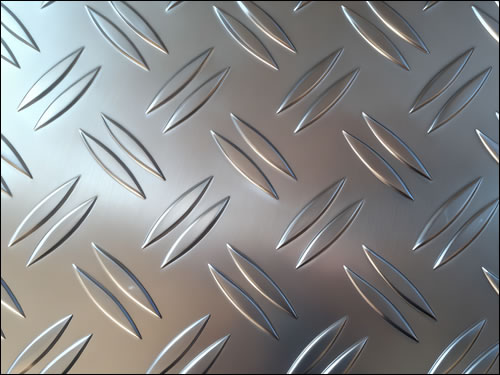
2 Bar Checkered Diamond Plate
For Trailer Flooring
Material: Aluminum 6061
Size: 4 feet x 8 feet
3 Bar Aluminum Checkered Plate
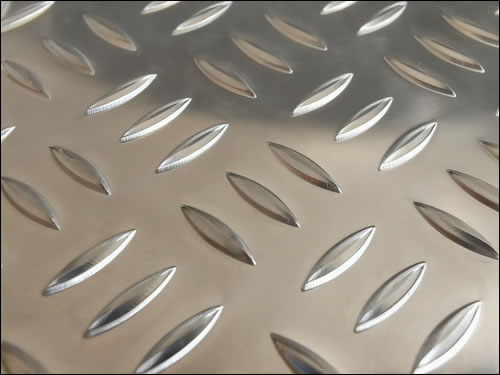
Aluminium Checkered Plate for truck floor treads
Thickness 4mm
Floor sheet size: 2400mm x 5500mm
Material:Aluminum 5052
ALUMINIUM TREAD PLATE
GRADE 5251 "O" TEMPER
Size: 3 x 1640 x 1720mm
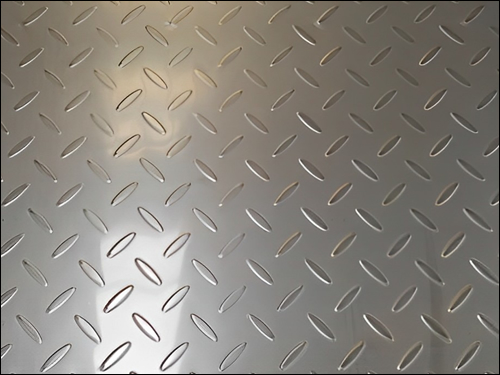
Aluminum Tread Plate, Size: 5mm x 4feet x 8 feet
1/85" Aluminum Tread plate 4'x4'
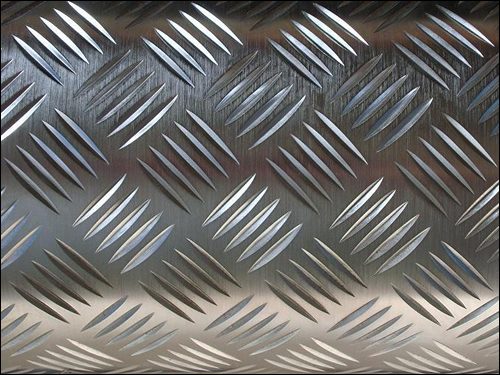 Alum diamond 5 bar checkered plate
Alum diamond 5 bar checkered plate
1/8 x 48 x 96
Material: Aluminum alloy
Uses: Anti skidding stair treads
Aluminum Tread Plate Material Standards Detail Information
5086-H34 Aluminum Tread Plate
5086-H34 aluminum tread plate is a specialized aluminum alloy sheet known for its corrosion resistance, high strength, and durability in challenging conditions. It finds extensive use in marine, shipbuilding, and various other industries like transportation, construction, and manufacturing that demand these attributes. Its surface tread pattern boosts slip resistance, making it ideal for flooring and similar applications.
- Material: Aluminum
- Thickness: commonly available in a range from 0.125 inches (3.18 mm) to 0.25 inches (6.35 mm) or even thicker.
- Width: commonly ranging from 36 inches (914.4 mm) to 48 inches (1219.2 mm) or wider.
Length: Standard lengths are often 96 inches (2438.4 mm) or 120 inches (3048 mm), but custom lengths are also available. - Alloy Number: 5086 is the alloy number. It is a high-strength, non-heat-treatable aluminum alloy known for its excellent corrosion resistance and weldability.
- Temper: H34 is the temper designation, indicating that the aluminum has undergone strain hardening and stabilization to achieve specific mechanical properties. In this case, H34 indicates that it has been strain-hardened and partially annealed.
- Standard: 5086-H34 aluminum tread plate complies with various industry standards, such as ASTM (American Society for Testing and Materials) standards, AMS (Aerospace Material Specification) standards, or other international specifications. The specific standard may vary depending on the supplier and application.
ASTM B632/B632M and EN 482-5
ASTM B632/B632M and EN 482-5 are standards pertaining to aluminum alloys and specifically focus on measuring the thickness of metal and alloy coatings. ASTM B632/B632M deals with aluminum tread plates, while EN 482-5 is a section of a European standard that establishes terminology for surface texture measurements, encompassing coating thickness measurements on materials like aluminum alloys. These standards play a crucial role in ensuring manufacturing and measurement processes maintain consistency and quality.
ASTM B632/B632M:
ASTM B632/B632M is a standard specification published by ASTM International (formerly known as the American Society for Testing and Materials).
It is titled "Standard Specification for Aluminum-Alloy Rolled Tread Plate."
This standard provides requirements for aluminum-alloy rolled tread plates, which are commonly used in applications requiring slip resistance, such as flooring, stairs, and other structural uses.
ASTM B632/B632M covers various aspects of aluminum tread plates, including material composition, dimensions, mechanical properties, workmanship, finish, and testing procedures.
EN 482-5:
EN 482-5 is part of the European Standard EN 482, which is titled "Geometrical product specifications (GPS) - Surface texture: Profile method; Surfaces having stratified functional properties - Part 5: Terms and definitions."
It is a standard that provides terminology and definitions related to surface texture measurements, particularly when dealing with surfaces that have stratified functional properties. Surface texture refers to the topography or characteristics of a surface.
EN 482-5, as part of the standard, specifies terms and definitions that are relevant to the profiling of surfaces, which can include measurements of coating thickness and roughness.
It is used in various industries to establish a common understanding of surface texture and its measurement methods.